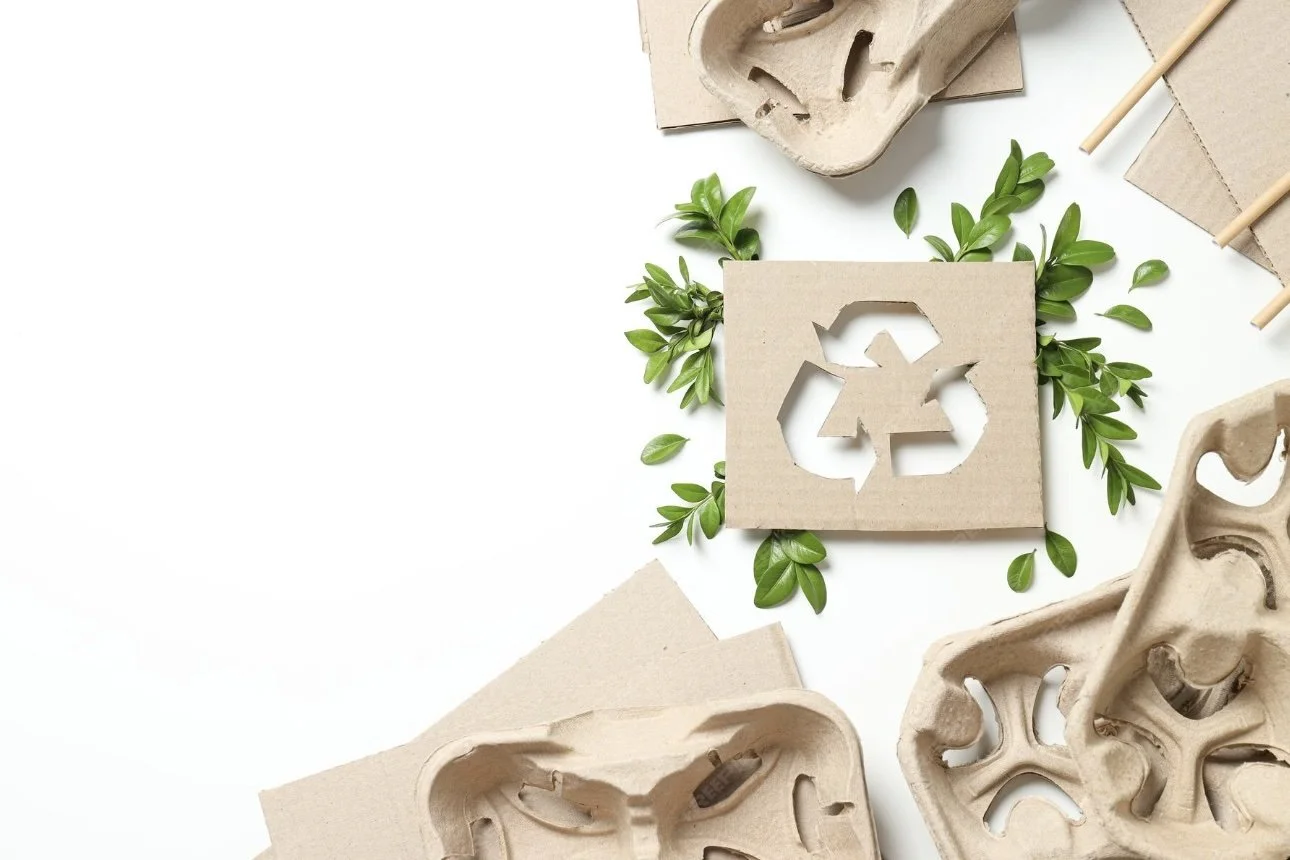Sustainable Branding: Turning Conscious Choices Into Powerful Connections
Sustainability isn’t a buzzword anymore.
It’s a standard.
People want more than a great product or a beautiful brand. They want to know that the brands they support care about what they create, how they operate, and the impact they leave behind.
For small businesses and creative entrepreneurs, this expectation can feel heavy. But think of it as opening a door. It gives you a chance to show up differently with intention, transparency, and heart.
The real challenge is staying true to your values in a world where “green” is sometimes treated as a marketing angle instead of a meaningful practice.
But remember, when you lead with purpose, you build trust. When you make thoughtful choices, you build loyalty. When you let people into your progress, you create connection.
Sustainable branding is not about doing everything perfectly. It’s about choosing what matters and living those choices with integrity. When sustainability becomes part of your story, not just a line in your marketing plan, people feel the difference.
Define What Sustainability Means for Your Brand
There is no one way to be sustainable. That’s the beauty of it.
You get to decide what sustainability means for your business and your mission.
For some brands, sustainability looks like choosing recycled packaging.
For others, it means working with local vendors or reducing energy use.
Some brands focus on the community by donating time, expertise, or resources to causes that matter.
Begin by asking yourself:
• What feels true to the values of my brand?
• Where do we have influence right now?
• What would be meaningful to our audience?
Once you define what sustainability looks like for you, let it become part of how you operate. Small changes can create a deep impact when they are rooted in purpose.
Lead With Transparency
Audiences catch the little things; they can feel authenticity. They can also feel when something is being exaggerated or dressed up to seem more meaningful than it is.
Instead of making broad claims like “we’re eco-friendly,” show your audience the real decisions you are making. Be specific. Share the journey.
For example:
• “All of our packaging is recyclable and made from post-consumer materials.”
• “We reduced paper waste by moving invoicing and order management online.”
• “We source our materials from ethical suppliers within our region.”
Transparency builds trust. Even “work in progress” updates build trust. Generalities break it.
Your customers don’t need perfection.
They just want honesty.
Reflect Your Values Through Design
Your visuals communicate your values long before your voice does.
If sustainability is part of your brand story, let it show up in the details — in your palette, your photography, your textures, and your content. This doesn’t mean you have to lean into earth tones or neutral aesthetics unless that truly aligns with your brand identity.
What matters is that the visual experience matches the values you talk about. If your brand is grounded in care, creativity, and connection, let your imagery feel grounded, creative, and connected.
People connect to what feels real.
Show the behind-the-scenes moments.
Show the process.
Show the hands involved.
Perfection doesn’t build trust. Humanity does.
Invite Your Audience Into the Journey
Sustainability becomes more powerful when it is shared.
Invite your audience to participate in what you are building.
Create rituals that give them a role in the mission.
You might:
• Introduce a refill or reuse program for loyal customers
• Publish an annual “impact update” that reflects the progress you’ve made
• Encourage customers to reuse packaging and share how they do it
• Celebrate people in your community who are embracing sustainable practices
When people feel part of your mission, sustainability becomes a shared effort instead of a brand statement.
Belonging creates loyalty.
Shared purpose creates advocacy.
Balance Sustainability With Growth
Sustainable choices are not always the easiest or most affordable. You may need to source differently, research more, or move more slowly. And yes, some decisions may cost more upfront.
But sustainable brands don’t compete on price.
They connect on purpose.
People may buy once because of convenience.
They return because of values.
Your audience isn’t just choosing your product; they are choosing what it represents.
Forget Perfect — Focus on Honest Progress
You don’t have to do everything.
You don’t have to get it right the first time.
You don’t have to wait until your entire business is “sustainable” to start introducing it.
Your audience doesn’t expect perfection.
They expect sincerity.
You can say:
“We are starting with compostable mailers and plan to evaluate every other material we use throughout the year.”
Honest progress resonates more than flawless presentation.
Over time, your sustainability efforts will become a living part of your brand, which your audience will grow alongside.
The Marketing Power of Purpose
Purpose makes your brand memorable.
Purpose makes your brand referable.
Purpose makes your brand meaningful.
You don’t need the big brand’s size to create the same level of impact.
You only need clarity, consistency, and intention.
When your audience sees what you care about and sees you acting on it, sustainability becomes one of your strongest differentiation points.
People don’t just support the brand.
They support the mission.
Final Thoughts
Sustainable branding is not about doing everything at once.
It’s about doing what matters — and doing it with heart.
Your biggest advantage as a small business or creative entrepreneur is your ability to move with intention. You can make sustainability feel personal, relatable, and real.
Because when people feel good about the brands they choose, they don’t just buy.
They become part of the impact.
If you’re ready to explore how sustainability can become a natural, effortless part of your brand story, let’s talk.
Book a Clarity Call to discuss your brand’s impact today!
Frequently Asked Questions
-
Start small. Choose one or two areas you can realistically improve — like packaging, sourcing, or digital processes — and build from there.
-
Be specific, transparent, and honest. Share measurable actions, not buzzwords, and show progress over perfection.
-
Even if it’s not their top priority, eco-conscious practices enhance trust and credibility. Consumers value brands that operate responsibly.



